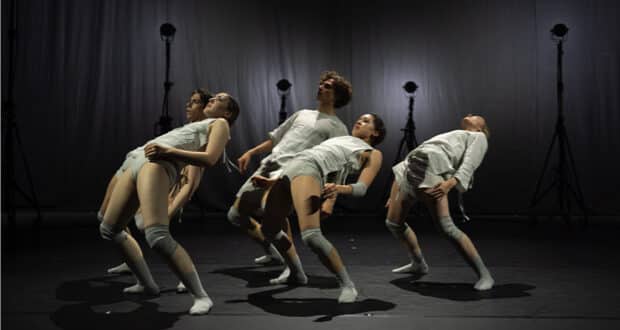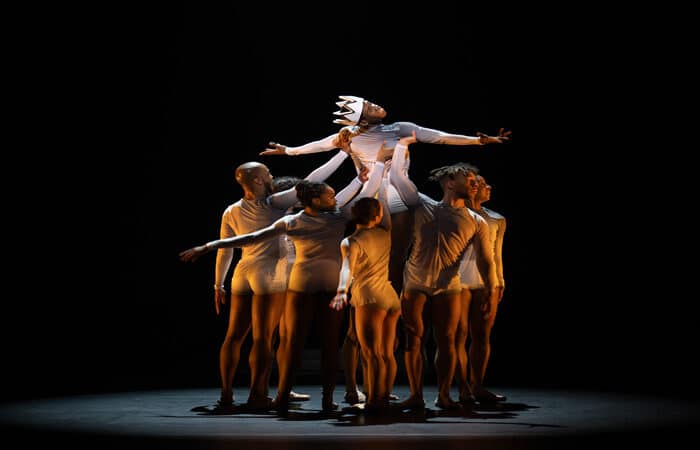Sadler’s Wells
From its 1605 publication to its 2022 balletic incarnation, Miguel de Cervantes’s tale of the man from La Mancha has captured hearts and imaginations. Can Carlos Acosta and the full might of the Birmingham Royal Ballet and the Royal Ballet Sinfonia bring their own spark to the quixotic tale?
In 1869 the first balletic production premiered in Moscow, choreographed by Marius Petipa (a balletic starlet of his time) with music by Ludwig Minkus. Throughout the following years, male ballet stars have recognised the dynamic role of Basilio: Rudolf Nureyev, Vladimir Vasiliev, and Acosta himself. This “Rom-com” ballet is close to Acosta’s heart and career. Having been launched into prominence at just 16 winning the Gold Medal Prix de Lausanne for an extract of this very show. Ballet loves a building progression, layer upon layer of creative sedimentation. So how do these strata measure up? and what does it add to the 400 years of history beneath it?
Following the deluded but well-meaning nobleman (you know who), as he is embroiled in a fanatical knight’s quest, and barges into other people’s love lives. Plenty of 17th-century high jinx ensue. Tom Rogers as our mentally ill hero draws the short straw as dance he does very little of. Stomp around in a helmet and curtain pole, or being pulled along on a hobby horse? He does a lot of. Kit Holder as his squire is allowed more creative lenience, a gifted comic relief, and an effective physical storyteller.
The real draw is the lovers, who are given the meat of the Pas de deux and stage time. Mathias Dingman follows in Acosta’s footsteps (terrifying) confidently, leaping like a white stag over the stage. His characterisation however veers more into the prince territory than the down-to-earth barber he is meant to be. Momoko Hirata as the fizzy heroine Kitri extends like a leamer, high kicking to the heavens, a vision on point, light as a feather. Together their connection: extending pirouettes and complex lifting look as easy as tying a shoelace. These two know how to make technique look tranquil and love look long-suffering as they are kept apart by fate and a disapproving father. The repeated image of Hirata leaning back in Dingman’s arms, pericón(fan) extended in one hand, foot up in the other is unforgettable. Starfish in shape but a swooning dove in effect.
Brandon Lawrence as Espada (a famous matador) provides an energetic hint of brutality in his garb and demeanour.
Good things come in twos in this performance. Double surprise stars grab our interest, despite their short stage time. Javier Rojas as the bare-chested gypsy king brings some much-needed sex appeal to the production. thunderously urging his band on his rough movement and frantic bounding is some of the best characterisation throughout. This gypsy section stands out as it features Hans Vercauteren’s (who re-orchestrated the score) own Rapsody. Don Quixote has been reworked by a small army of choreographers and composers and Vercauteren’s edition I hope will be lasting.
Finally (performance-wise) Yu Kurihara as king of the dryads. In a section where Don Quixote stumbles into an enchanted forest, he is surrounded by Tim Hatley’s only disappointing costume choice: Dryads looking more sprite-ish than Greco. Nevertheless, in the middle of this fairy wonderland Kurihara (the only one looking appropriate as a satyr) channels this tricking energy coquettishly cajoling our hero. Keeping the audience in stitches and begging for more.
Overall Hatley’s designs are sensational. Creating a lighter touring production than Acosta’s original 2013 Royal Ballet version the depth of aesthetic is undimmed. Warm washes of golden light flood an open Spanish town square. Bejewelled silvery leaves thread down in the enchanted forest and a particularly authentic wine cellar grounds us expertly. Costume-wise we have the classics: matadors, flamenco dancers, peasants, and lords, all in exotic detail without the theme park Disney fetishism. Golds, reds, brightness, and flashing sparkle dominate the palette, mirroring the exposed emotions of the characters.
300 costumes, 60 dancers, and 58 musicians, this is a beast of a production. Its strongest points are when everything pulls together. Narrative-driven ballet can sometimes flounder where dialog is mimed, “meaningful” hand flapping and pretentious middle-distance gazing. Although this pantomime of emotion mixed with precise movement is odd the group sections make up for it. This is where the Corps de ballet comes into their own. The clapping, clicking, drum rolling, and castanet-calling energy of the production is hard to deny. Acosta’s heritage is passionately brought to life on stage.
As another footnote is added to the long history of this illustrious tale the virtuosity of all involved is impressive. Yes, the themes are boiled down to love, lust, loss, and a happy ending but Acosta himself calls it a “sunshine ballet”. With the current aeronautical chaos and rising levels of covid maybe it is best to be transported to Spain via your local theatre? Although grab some tapas before, as the 2 intervals will ensure you will miss last orders at most local restaurants. You been advised and warned, now off into the burning Iberian sunset with you!
Get your tickets today right here!



